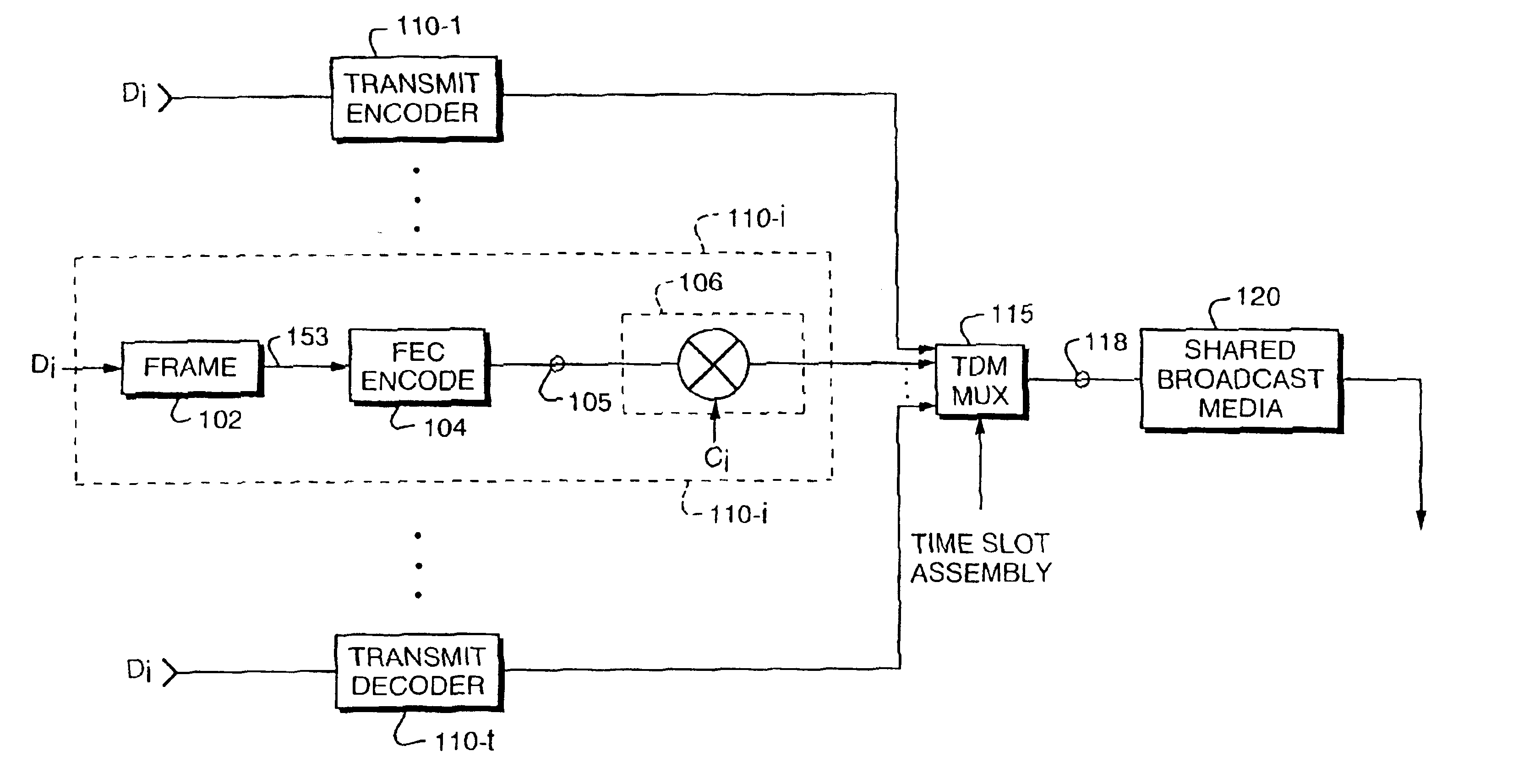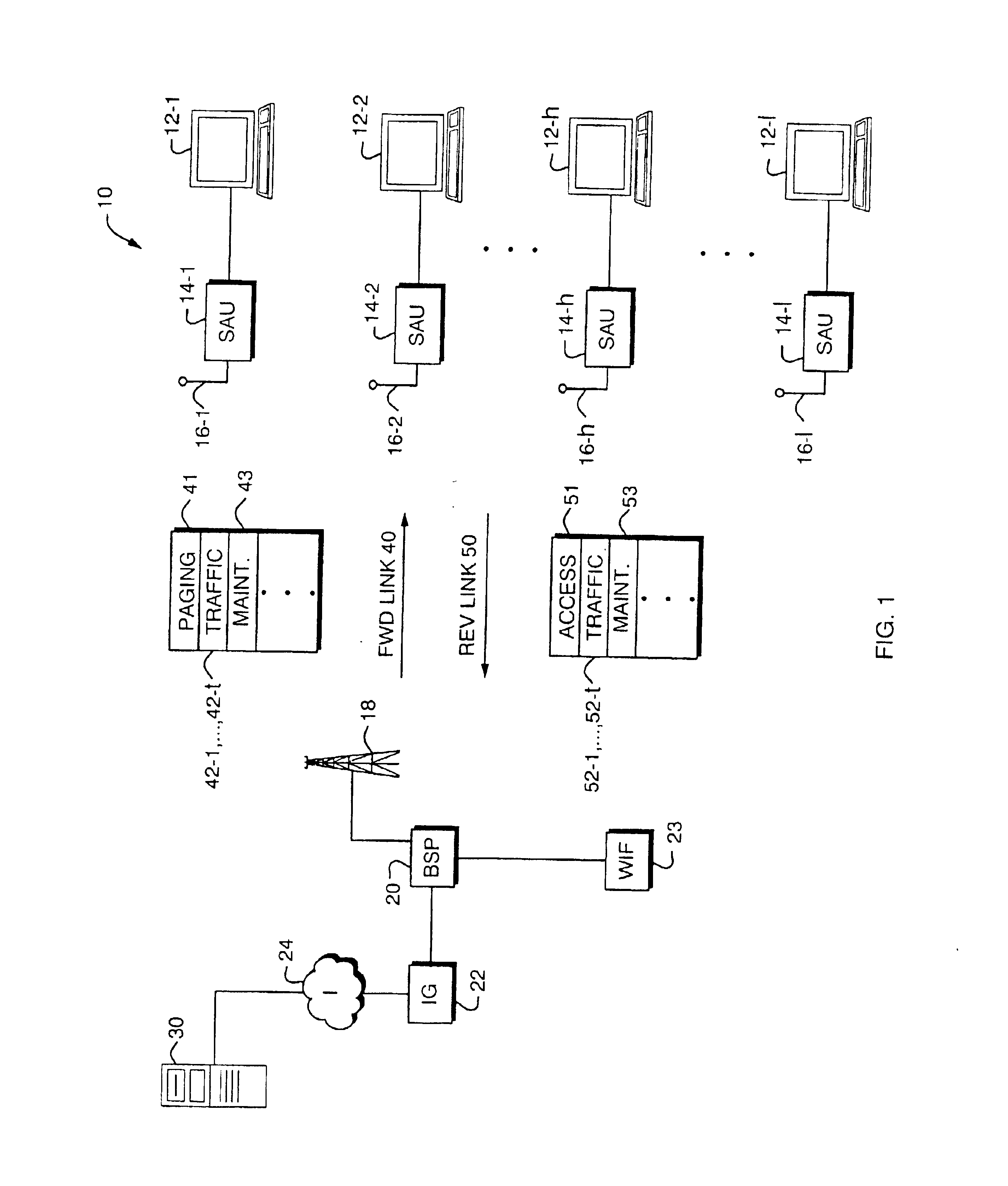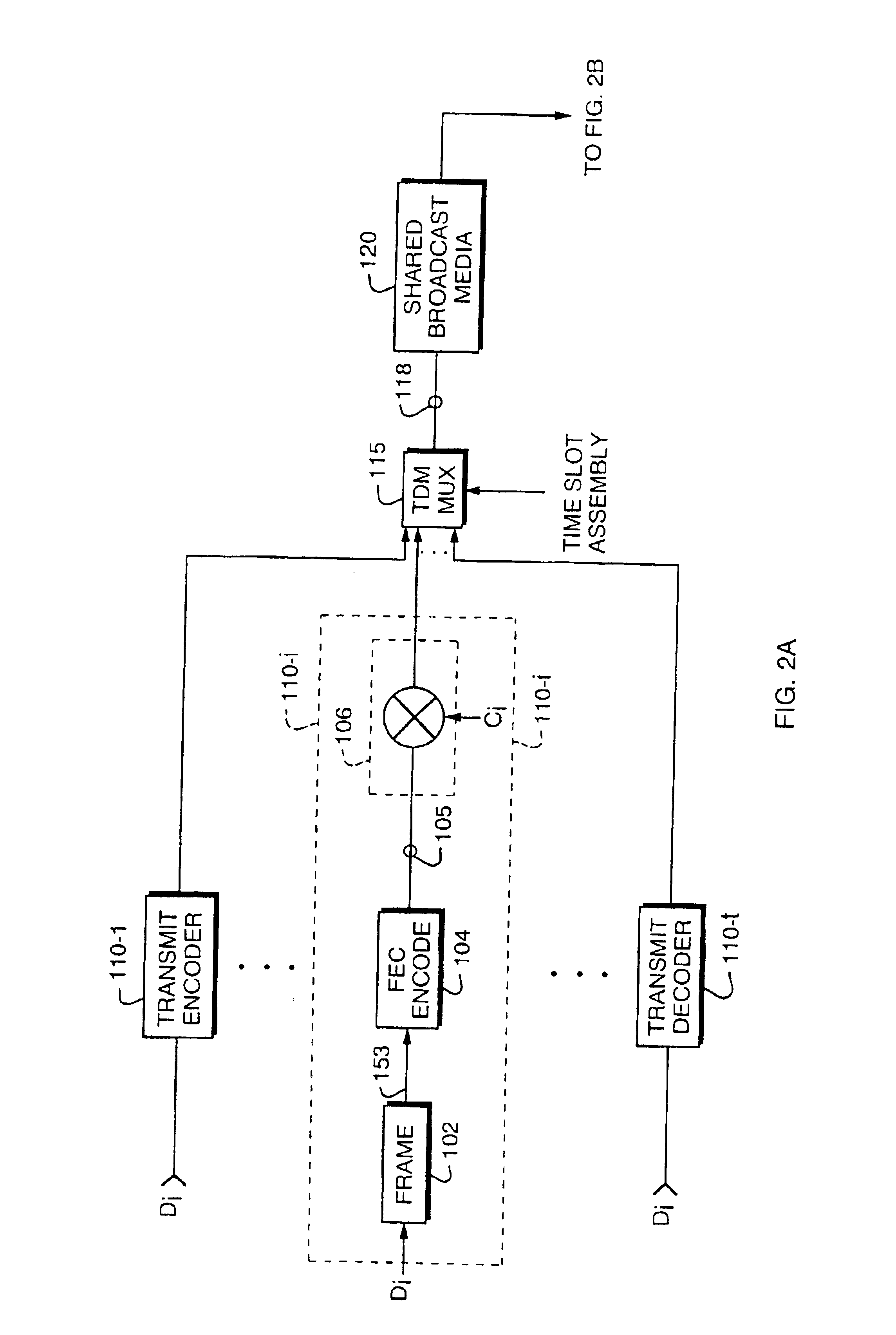Receiver for time division multiplex system without explicit time slot assignment
- Summary
- Abstract
- Description
- Claims
- Application Information
AI Technical Summary
Benefits of technology
Problems solved by technology
Method used
Image
Examples
Embodiment Construction
FIG. 1 is a block diagram of a communication system 10 that makes use of Time Division Multiplexing (TDM) to allow multiple transmitters and receivers to share access to a common channel resource on a time slot basis, without the need for explicit time slot assignment information to be made available at the receiver. In the following description, the communication system 10 is described such that the shared channel resource is a wireless or radio channel. However, it should be understood that the techniques described here may be applied to allow shared access to other types of media such as telephone connections, computer network connections, cable connections, and other physical media to which access is granted on a demand driven time slot basis.
The communication system 10 includes a number of Personal Computer (PC) devices 12-1, 12-2, . . . 12-h, . . . 12-1, corresponding Subscriber Access Units (SAUs) 14-1, 14-2, . . . 14-h, . . . 14-1, and associated antennas 16-1, 16-2, . . . 1...
PUM
 Login to View More
Login to View More Abstract
Description
Claims
Application Information
 Login to View More
Login to View More - R&D
- Intellectual Property
- Life Sciences
- Materials
- Tech Scout
- Unparalleled Data Quality
- Higher Quality Content
- 60% Fewer Hallucinations
Browse by: Latest US Patents, China's latest patents, Technical Efficacy Thesaurus, Application Domain, Technology Topic, Popular Technical Reports.
© 2025 PatSnap. All rights reserved.Legal|Privacy policy|Modern Slavery Act Transparency Statement|Sitemap|About US| Contact US: help@patsnap.com



